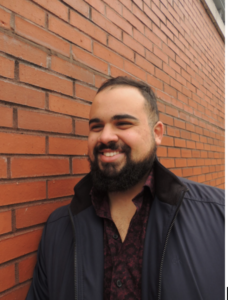Land Acknowledgment
I would like to acknowledge that I am currently working on the land of the Muskogee people. The Muskogee/Creek tribe is officially recognized by the State of Georgia and they maintain their stewardship in their tribal town of Tama.
It is also important to acknowledge that before the Muskogee, this land belonged to the Apalachee people, who were displaced to Louisiana. Currently, the Louisiana Apalachee tribe is seeking recognition from the Bureau of Indian Affairs.
I am grateful to be working on the land rich in history and will work to honor the memory of the Apalachee and Creek peoples.
Technological Hurdles and the Production of Virtual Theatre
- Source: https://stock.adobe.com/search?k=premiere+pro
Originally written mid-April, 2021
As the Davis Shakespeare Festival is approaching its festival date, we here are hard at work brainstorming the most effective ways to bring you theatre in a virtual format. There were several options available to us. We could choose to livestream the production and create an environment that closely resembled that of live theatre, but from the comfort of your own home. We could also choose to pre-record everything, assemble the audio and video in Adobe software, and then present this as a live broadcast. Our group chose the latter of the two options. I’ll discuss why later, but first I want to draw attention to the obvious hurdles of producing virtual theatre and why that would impact one’s decision of which creative solution to pursue.
The most prevalent and difficult task in producing virtual theatre is finding a way to simulate two actors being next to each other when the two are calling from entirely different locations. While we can use the rotoscoping feature in Adobe After Effects to create new layers with the actors and assemble them in a way to mimic them being close together, we are constricted by time. Therefore, we have to think of effective and creative ways while adhering to our virtual restrictions.
Our group chose to lean heavily into the virtual atmosphere when deciding the aesthetic of Shakespeare’s Much Ado About Nothing. We decided that we wanted to alternate between different video calling apps, including Zoom, FaceTime, Messenger, and others. This would solve our problem of having to simulate our actors being next to each other in a scene, since they would just act as if they were on a video call. It would also address any staging issues, as we could use things like turning cameras off to signal that a character has gone “offstage.” It would also be easier to take separate videos of the actors and assemble them under a Zoom or Facetime overlay. Yet this method has its own drawbacks; the primary one being that we would have to find a way to maintain interest, so that the play doesn’t feel like another zoom call.
Zoom fatigue is a very real thing, and the last thing we want to do is create content that would essentially feel like another zoom meeting. We thought maybe we could add new “scenery” like creating different overlays to convey the different scenes. We would reserve this for really significant or intimate scenes between the two players. Yet this would then have staging problems as there would be no easy way to simulate a character moving offstage. Would we also then require our actors have green screens and simulate the backdrop behind them? Would it also look out of place and obvious if our actors are on Zoom, but we have a garden overlay to show that they are in a garden?
There seems to be no end to the different hurdles that arise when producing virtual theatre. Every creative idea has its own benefits and drawbacks. Ultimately, there can’t be a right or wrong way to go about it. It is entirely dependent on the technology available to a team and the artistic vision behind the production.

Mahmoud Said
He/Him/His
DSF Digital Internship Participant
Florida State University
MA Arts Administration ’22

